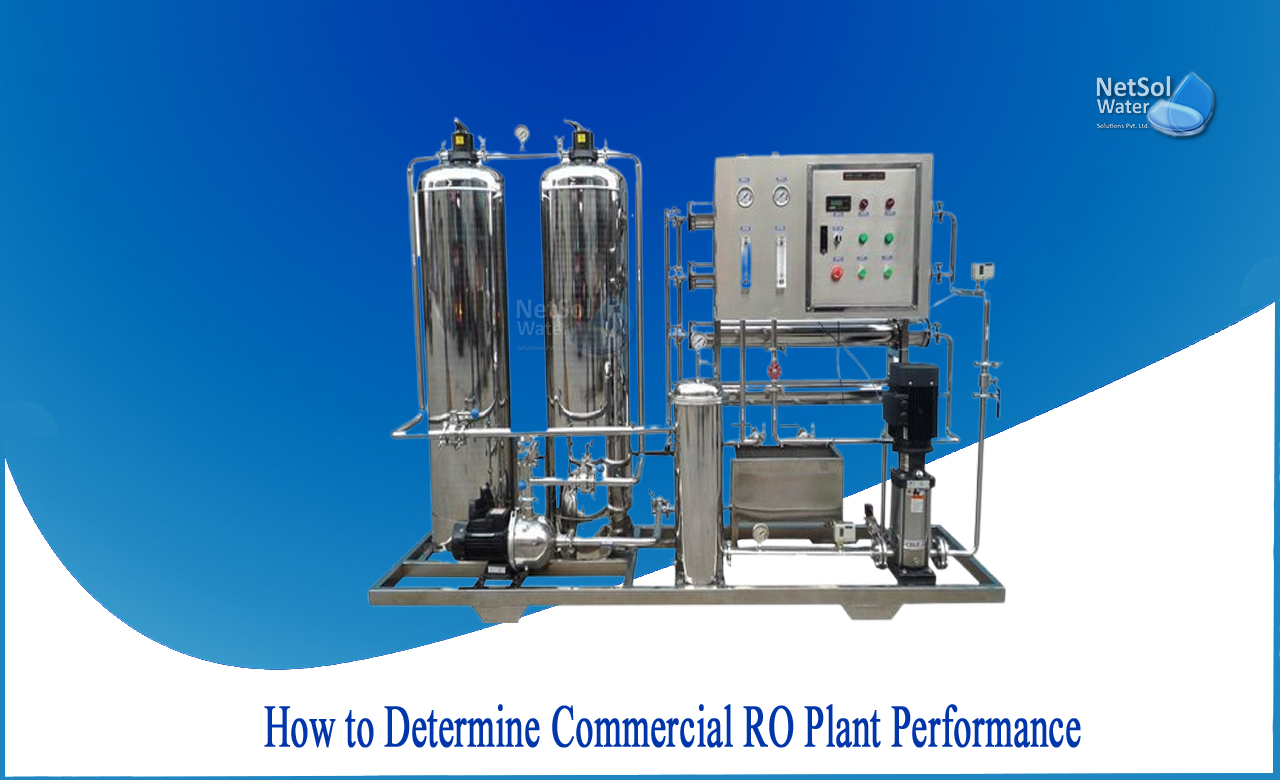How to determine Commercial RO Plant performance?
Reverse osmosis is a technique for removing the vast majority of pollutants from water by forcing it through a semi-permeable membrane under pressure. In the RO process, water molecules are driven through the semi-permeable membrane when pressure is applied to the concentrated solution, but impurities are not permitted through.
Calculations for Reverse Osmosis Performance and Design
There are a few calculations that are used to evaluate RO system's performance as well as design concerns. Instrumentation on a RO system shows quality, flow, pressure, and other data such as temperature and operating hours.
At a minimum, the following operation parameters are required to accurately measure the performance of RO systems:
1: Feed pressure
2: Permeate pressure
3: Concentrate pressure
4: Feed conductivity
5: Permeate conductivity
6: Feed flow
7: Permeate flow
8: Temperature
Design considerations for Commercial RO Plants
1: Passage of salt in (%)
This is the amount of salt that travels through the RO system, represented as a percentage. The better the system performs, the lower the salt passage. A high salt passage could indicate that the membranes need to be cleaned or replaced.
Salt Passage in (%) = (1 – Salt Rejection in %)
2: (%)of recovery
Percent Recovery is the quantity of water that is recovered as permeate or product water rather than being dumped to the drain as concentrate.
The higher the recovery percentage, the less concentrate water you're throwing down the drain and the more permeate water you're keeping. However, if the recovery percent is too high for the RO design, scale and fouling might occur, causing more serious issues.
The formula for calculating percent recovery is as follows:
(%) Recovery = Permeate Flow Rate in (gpm)/Feed Flow Rate in (gpm)*100
The effectiveness of the RO membranes in eliminating pollutants is determined by this equation. It does not tell you how well each individual membrane is performing; rather, it tells you how well the system as a whole is doing. Most feed water pollutants are rejected 95 percent to 99 percent by a well-designed RO system with properly functioning RO membranes (that are of a certain size and charge).
The following equation can be used to estimate how successful the RO membranes are at removing contaminants:
Salt Rejection (%) = Feed Water Conductivity – Permeate Water Conductivity / Conductivity of Feed * 100
4: Flux
5: Factor of concentration
The concentration factor is a significant equation for RO system design because it is connected to RO system recovery. The higher the percent recovery, the more concentrated salts and pollutants are collected in the concentrate stream. When the concentration factor is too high for the system design and feed water composition, this can result in more scaling on the surface of the RO membrane.
For example, a CF of 5 means that water coming into the concentrate stream is 5 times more concentrated than the water going into the feed stream.
6: Mass Balance
A Mass Balance equation is used to see if your flow and quality instruments are reading correctly or if they need to be calibrated. The performance data trending you're getting is useless if your instrumentation isn't reading correctly.
To perform a Mass Balance calculation, you'll need the following information from RO system:
1: Flow of Food in (gpm)
2: Flow of Permeate in (gpm)
3: Intensive Flow in (gpm)
4: Feed Conductivity in (µS)
5: Permeate Conductivityin (µS)
6: Concentrate Conductivity in (µS)
The mass balance equation is
(Conductivity of Feed flow x Feed Conductivity) = (Permeate Flow PF x Permeate Conductivity PC) + (Concentrate Flow x Concentrate Conductivity)
(Feed Flow= Permeate Flow + Concentrate Flow)
Conclusion
Reverse osmosis is a tried-and-true method of producing water that is suited for a wide range of industrial and commercial applications that require deionized or demineralized water. After the RO system, further post-treatments such as mixed bed deionization can improve the RO permeates quality and make it appropriate for the most demanding applications.
RO system's pretreatment and monitoring are critical for avoiding costly repairs and unscheduled maintenance. Your RO system should deliver many years of high purity water with the right system design, maintenance programme, and expert service assistance.
The best Whole-house, Commercial & Industrial RO plant manufacturers in India!
Netsol Water collaborates with a wide range of international organizations to tackle complicated problems of RO by strategically integrating modern treatment technology with practical solutions. We can also provide a good framework of plumbing connections of RO plants. Your water test findings can be discussed with an expert to assist you select which solution – or combination of solutions – will best meet your needs.
If you need help installing an efficient RO system, contact us. We can help you with design calculations, budgetary expenses, preliminary layouts, and a lifetime cost analysis.
Call us on +91 9650608473 or contact via email at enquiry@netsolwater.com for more information.



